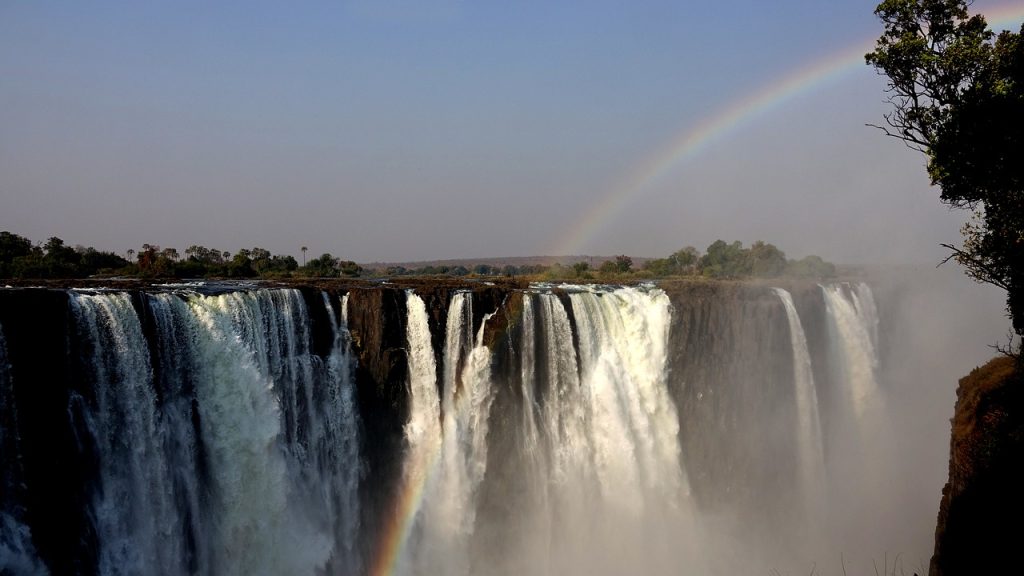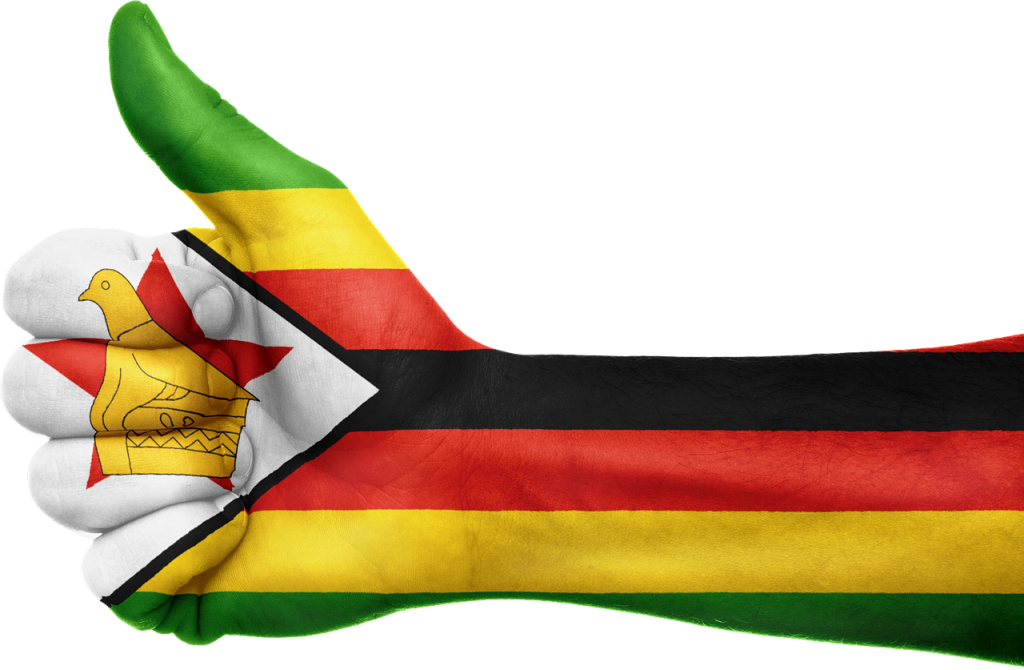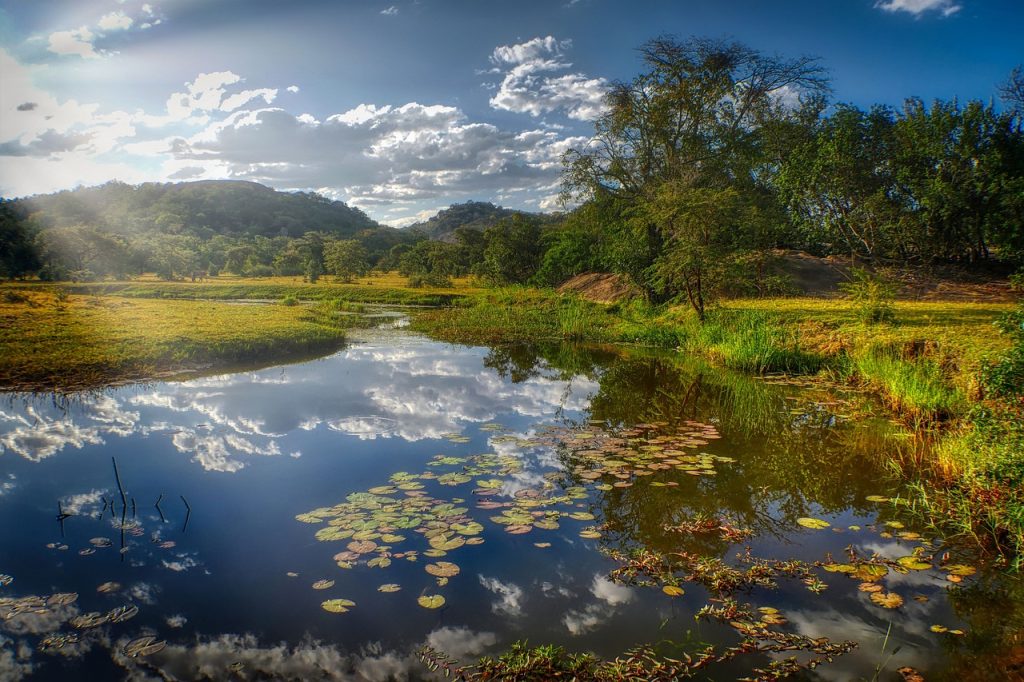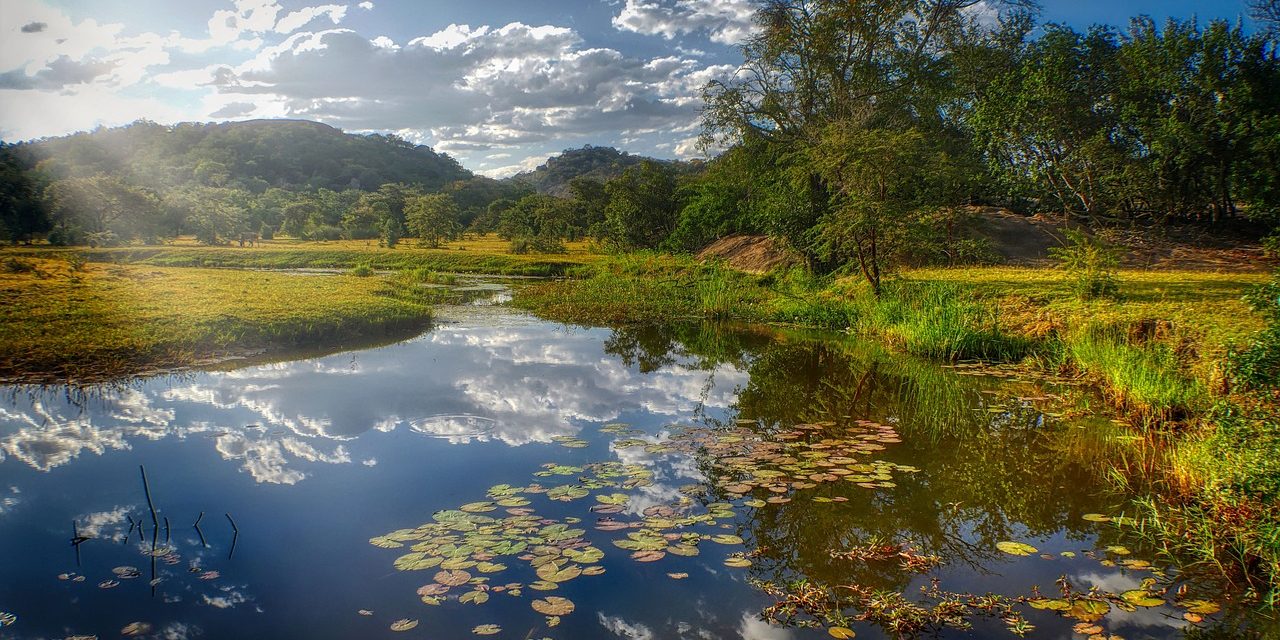If Zimbabwe is on your radar for a future vacation or if you’re simply curious about the country’s climate, you’ve come to the right place. In this article, we’ll take a look at the weather in Zimbabwe throughout the year, providing valuable information for anyone planning to visit. From the scorching summers to the mild and refreshing winters, Zimbabwe offers a diverse range of weather conditions, ensuring there’s something for every type of traveler. So, grab a cup of coffee and join us on this journey through Zimbabwe’s ever-changing climate.
January
Average temperature
In January, the average temperature in Zimbabwe is quite warm, with highs reaching around 30 degrees Celsius (86 degrees Fahrenheit). The nights can be slightly cooler, but overall, it is a pleasant and comfortable temperature for outdoor activities.
Rainfall
January is part of Zimbabwe’s rainy season, so you can expect a decent amount of rainfall during this month. On average, the country receives about 150-200 millimeters (6-8 inches) of rainfall in January. It is important to be prepared for occasional showers and thunderstorms, as they can be quite heavy at times.
Humidity
The humidity in Zimbabwe during January tends to be relatively high due to the rainy season. Expect humidity levels to hover around 70-80%, which can make the air feel quite heavy and sticky. Don’t forget to stay hydrated and dress in lightweight, breathable clothing to combat the humidity.
Sunshine
While January does experience rainfall, there are still plenty of sunny days to enjoy. On average, Zimbabwe receives approximately 8 hours of sunshine per day in January. This means that you will have an ample amount of daylight to explore the country’s beautiful landscapes and engage in outdoor activities.
Wind speed
In terms of wind speed, January in Zimbabwe tends to have mild to moderate breezes. The average wind speed ranges from 10 to 20 kilometers per hour (6 to 12 miles per hour). While not excessively windy, it is still advisable to dress accordingly and be cautious of strong gusts during thunderstorms.
February
Average temperature
In February, the temperature in Zimbabwe remains warm and pleasant, similar to January. The average temperature during this month ranges from 28 to 31 degrees Celsius (82 to 88 degrees Fahrenheit), making it a great time to explore the country’s many natural wonders.
Rainfall
Although the rainy season continues into February, the amount of rainfall starts to decrease compared to previous months. On average, Zimbabwe experiences around 100-150 millimeters (4-6 inches) of rainfall in February. While showers are still possible, they are often shorter in duration and less intense.
Humidity
The humidity levels in Zimbabwe in February are slightly lower compared to January, but still relatively high. Expect humidity levels to be around 60-70%, which can make the air feel moist and sticky. It is important to stay hydrated and seek shade when needed during outdoor activities.
Sunshine
February offers plenty of sunny days, allowing you to fully enjoy Zimbabwe’s natural beauty. On average, the country receives approximately 7-8 hours of sunshine per day. The ample sunlight provides opportunities for outdoor adventures, wildlife viewing, and exploring national parks.
Wind speed
Like January, February experiences mild to moderate winds in Zimbabwe. The average wind speed ranges from 10 to 20 kilometers per hour (6 to 12 miles per hour). It is advisable to take note of weather forecasts and be prepared for occasional gusts, especially during thunderstorms.

March
Average temperature
As Zimbabwe transitions into autumn, the average temperature in March begins to cool down slightly. Temperatures range from 26 to 29 degrees Celsius (79 to 84 degrees Fahrenheit), providing a pleasant climate for outdoor activities.
Rainfall
March still falls within the rainy season, although the amount of rainfall continues to decrease. On average, Zimbabwe receives around 50-100 millimeters (2-4 inches) of rainfall in March. Showers are less frequent, and they tend to be lighter and shorter in duration.
Humidity
The humidity levels in March are noticeably lower compared to the previous months. Humidity ranges from 50-60%, creating a relatively drier and more comfortable atmosphere. This makes outdoor activities more enjoyable, as the air feels less sticky and heavy.
Sunshine
March continues to offer a fair amount of sunshine, allowing for outdoor exploration and sightseeing. On average, Zimbabwe experiences around 7 hours of sunshine per day. The pleasant weather and ample sunshine make it a great time to visit national parks, engage in wildlife viewing, and explore the country’s cultural sites.
Wind speed
March tends to have slightly stronger winds compared to the previous months. The average wind speed ranges from 15 to 25 kilometers per hour (9 to 15 miles per hour). While not excessively windy, it is advisable to be mindful of windy conditions, especially if engaging in outdoor activities such as hiking or water sports.
April
Average temperature
In April, Zimbabwe experiences a further decline in temperature as autumn progresses. The average temperature ranges from 23 to 27 degrees Celsius (73 to 81 degrees Fahrenheit). It is generally a comfortable and mild climate, ideal for outdoor adventures.
Rainfall
April marks the end of the rainy season in Zimbabwe, and rainfall amounts decrease significantly. On average, the country receives around 20-50 millimeters (0.8-2 inches) of rainfall in April. Showers become infrequent, and the chances of encountering heavy rain decrease as well.
Humidity
The humidity levels in April continue to decrease, providing a relatively drier and more comfortable atmosphere. Humidity ranges from 40-50%, making it easier to engage in outdoor activities without feeling excessively sticky or uncomfortable.
Sunshine
April offers plenty of sunshine, with an average of 8 hours of sunshine per day. The clear skies and warm temperatures make it an opportune time to visit national parks, embark on wildlife safaris, and explore Zimbabwe’s cultural heritage sites.
Wind speed
During April, winds are generally mild, with an average speed ranging from 10 to 15 kilometers per hour (6 to 9 miles per hour). While not particularly windy, it is always advisable to be prepared for occasional gusts, especially in open areas.

May
Average temperature
May marks the beginning of Zimbabwe’s winter season, bringing cooler temperatures throughout the country. The average temperature ranges from 18 to 23 degrees Celsius (64 to 73 degrees Fahrenheit). It is advisable to pack some warmer clothing for the evenings and early mornings.
Rainfall
May experiences a significant decrease in rainfall compared to the previous months. On average, Zimbabwe receives around 10-30 millimeters (0.4-1.2 inches) of rainfall in May. Showers become rare, and the chances of encountering heavy rain are minimal.
Humidity
Humidity levels continue to decrease in May, ranging from 30-40%. The air feels noticeably drier, creating a more comfortable environment for outdoor activities. However, it is still important to stay hydrated and protect your skin from dryness and sun exposure.
Sunshine
May still offers a fair amount of sunshine, with an average of 8 hours of sunshine per day. The clear skies and mild temperatures make it an ideal time to explore Zimbabwe’s natural beauty, engage in wildlife viewing, and visit historical sites.
Wind speed
Winds in May are generally mild, with an average speed ranging from 5 to 15 kilometers per hour (3 to 9 miles per hour). While not particularly windy, it is advisable to keep in mind the changing weather conditions and be prepared for occasional gusts.
June
Average temperature
In June, Zimbabwe experiences winter, bringing cooler temperatures throughout the country. The average temperature ranges from 15 to 20 degrees Celsius (59 to 68 degrees Fahrenheit). It is advisable to dress in layers and pack warmer clothing, especially for early morning and evening activities.
Rainfall
June marks the beginning of the dry season in Zimbabwe, and rainfall becomes minimal. On average, the country receives around 1-5 millimeters (0.04-0.2 inches) of rainfall in June. Showers are rare, and the chances of encountering rain are significantly reduced.
Humidity
Humidity levels continue to decrease in June, ranging from 20-30%. The air feels drier and more comfortable, making outdoor activities enjoyable throughout the day. However, it is still important to stay hydrated and protect your skin from the cool, dry air.
Sunshine
June offers a good amount of sunshine, with an average of 8 hours of sunshine per day. While the temperatures may be cooler, the clear skies provide ample daylight for exploration and outdoor adventures. It is advisable to make the most of the sunny hours during the day.
Wind speed
During June, winds tend to be relatively calm, with an average speed ranging from 5 to 10 kilometers per hour (3 to 6 miles per hour). While not particularly windy, it is advisable to dress accordingly and be prepared for occasional gusts, especially in open areas.

July
Average temperature
July is one of the coolest months in Zimbabwe, with temperatures ranging from 14 to 19 degrees Celsius (57 to 66 degrees Fahrenheit). It is advisable to pack warm clothing, as the mornings and evenings can be quite chilly. Layering is key to staying comfortable throughout the day.
Rainfall
July is part of the dry season in Zimbabwe, and rainfall is minimal. On average, the country receives around 1-2 millimeters (0.04-0.08 inches) of rainfall in July. Showers are extremely rare, and the chances of encountering any rain are slim.
Humidity
Humidity levels continue to decrease in July, ranging from 15-25%. The air feels dry and crisp, making it a pleasant time to engage in outdoor activities. However, it is still important to stay hydrated and protect your skin from the cool, dry air.
Sunshine
July offers a good amount of sunshine, with an average of 8 hours of sunshine per day. While the temperatures may be cooler, the clear skies make it a great time to explore Zimbabwe’s natural wonders, go on wildlife safaris, or visit historical sites.
Wind speed
During July, winds tend to be relatively calm, with an average speed ranging from 5 to 10 kilometers per hour (3 to 6 miles per hour). While not particularly windy, it is advisable to dress warmly and be prepared for occasional gusts, especially in open areas.
August
Average temperature
August remains cool in Zimbabwe, with temperatures ranging from 14 to 19 degrees Celsius (57 to 66 degrees Fahrenheit). It is important to pack warm clothing to stay comfortable, especially during the early mornings and evenings.
Rainfall
August is still part of the dry season, and rainfall is extremely rare during this month. On average, the country receives less than 1 millimeter (0.04 inches) of rainfall in August. Showers are almost non-existent, allowing for uninterrupted outdoor activities.
Humidity
Humidity levels continue to decrease in August, ranging from 15-25%. The air feels dry and cool, creating a pleasant environment for outdoor adventures. However, it is still important to stay hydrated and protect your skin from the dry air and potential sun exposure.
Sunshine
August offers a good amount of sunshine, with an average of 9 hours of sunshine per day. The clear skies and mild temperatures make it an ideal time to explore Zimbabwe’s natural beauty, engage in wildlife viewing, and visit cultural sites.
Wind speed
During August, winds are generally mild, with an average speed ranging from 5 to 10 kilometers per hour (3 to 6 miles per hour). While not particularly windy, it is advisable to dress warmly and be prepared for occasional gusts, especially in open areas.
September
Average temperature
In September, Zimbabwe starts to transition into spring, bringing milder temperatures throughout the country. The average temperature ranges from 18 to 23 degrees Celsius (64 to 73 degrees Fahrenheit). It is advisable to pack layers for varying temperatures throughout the day.
Rainfall
September marks the end of the dry season and the beginning of the rainy season in Zimbabwe. On average, the country receives around 20-30 millimeters (0.8-1.2 inches) of rainfall in September. Showers become more frequent, but they are usually shorter in duration.
Humidity
Humidity levels start to increase in September, ranging from 30-40%. The air becomes slightly more humid, which can make the atmosphere feel less dry and more comfortable. However, it is still important to stay hydrated and protect yourself from potential mosquito activity.
Sunshine
September still offers a good amount of sunshine, with an average of 8 hours of sunshine per day. The mild temperatures and occasional showers make it a great time to explore Zimbabwe’s natural beauty, engage in wildlife viewing, and visit cultural heritage sites.
Wind speed
During September, winds are generally mild, with an average speed ranging from 5 to 15 kilometers per hour (3 to 9 miles per hour). While not particularly windy, it is advisable to dress in layers and be prepared for occasional gusts, especially during rainfall.
December
Average temperature
December marks the beginning of summer in Zimbabwe, bringing warmer temperatures throughout the country. The average temperature ranges from 28 to 31 degrees Celsius (82 to 88 degrees Fahrenheit). It is important to pack lightweight and breathable clothing to stay comfortable in the heat.
Rainfall
December falls within the rainy season, and Zimbabwe experiences an increase in rainfall. On average, the country receives around 150-200 millimeters (6-8 inches) of rainfall in December. Showers and thunderstorms become more frequent and can be heavy at times.
Humidity
Humidity levels increase significantly in December, ranging from 70-80%. The air feels humid and can be quite damp, requiring extra attention to hydration and protection from mosquitos. Lightweight and breathable clothing is essential to stay comfortable in the humid conditions.
Sunshine
Despite the increased rainfall, December still offers a fair amount of sunshine, with an average of 7-8 hours of sunshine per day. It is advisable to make the most of the sunny hours and plan outdoor activities accordingly.
Wind speed
During December, winds tend to be mild to moderate, with an average speed ranging from 10 to 20 kilometers per hour (6 to 12 miles per hour). It is advisable to be mindful of the changing weather conditions, as thunderstorms can bring stronger gusts of wind.
Throughout the year, Zimbabwe experiences a range of temperatures, rainfall patterns, humidity levels, sunshine hours, and wind speeds. Understanding these weather conditions can help you plan your visit to Zimbabwe and make the most of the country’s unique landscapes, wildlife, and cultural experiences. Whether you prefer the warmth and occasional rain of the rainy season or the milder temperatures and clear skies of the dry season, Zimbabwe offers something for every type of traveler.












